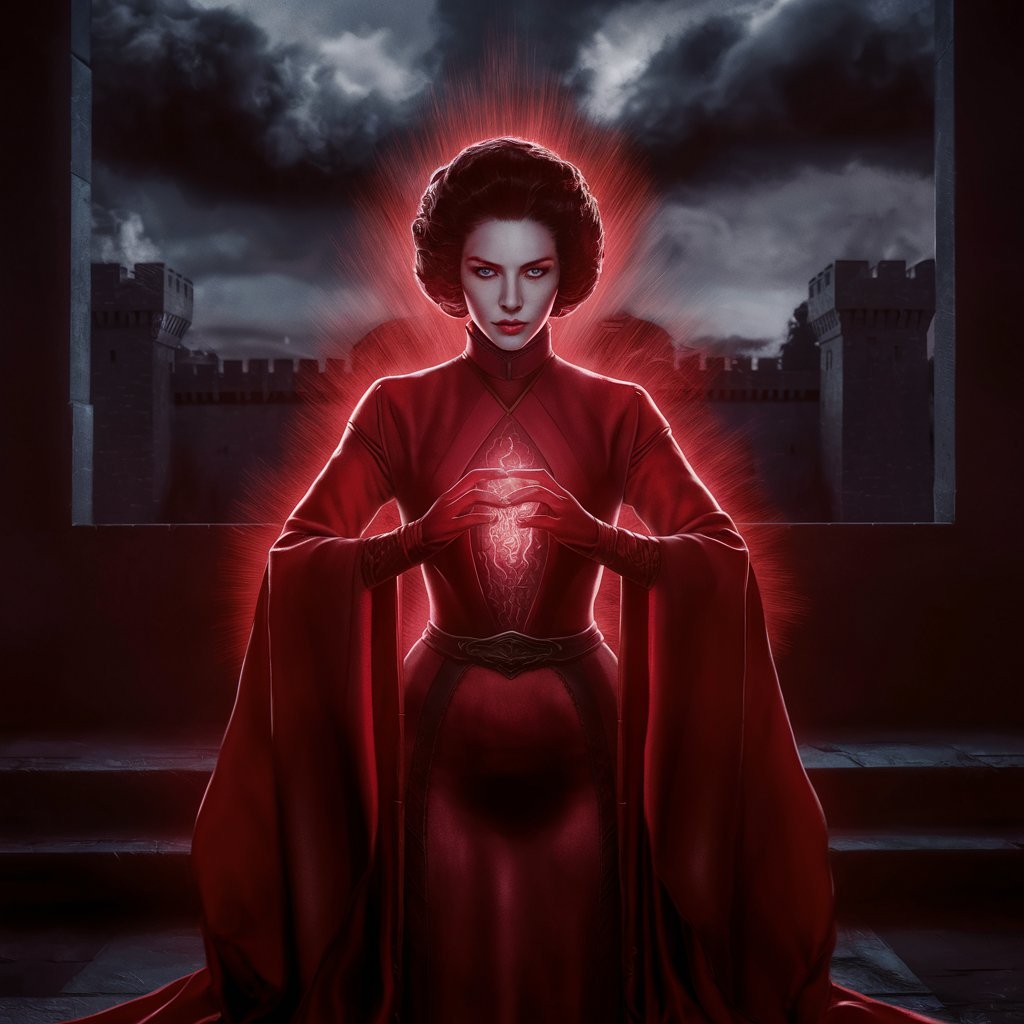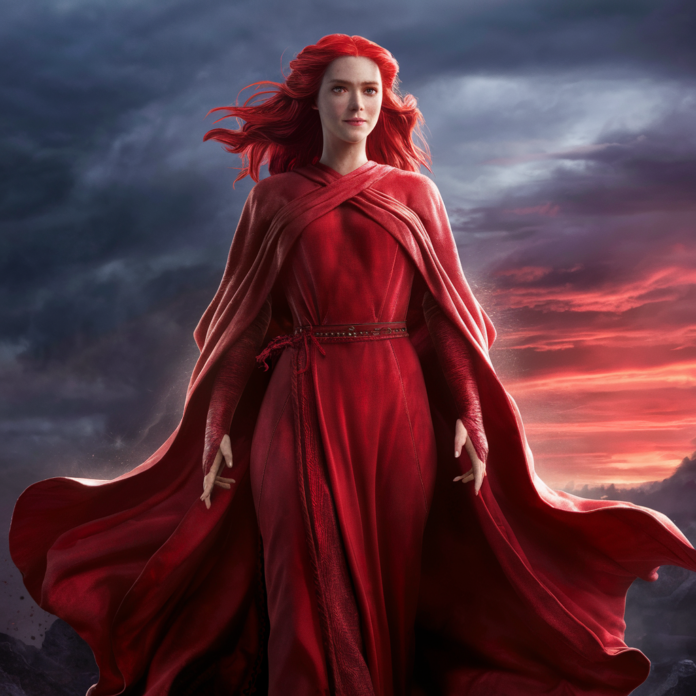Introduction
Known across Westeros simply as “The Red Woman,” Melisandre of Asshai was one of Game of Thrones’ most enigmatic and divisive figures. Cloaked in flowing crimson robes and bearing the fiery sigil of R’hllor, the Lord of Light, she wielded a dangerous combination of religious zealotry and genuine supernatural power. From resurrecting fallen heroes to birthing shadowy assassins, her actions altered the course of the series—yet her true loyalties and motivations remained shrouded in mystery. This article explores Melisandre’s complex role, her devastating magic, the shocking revelation of her true nature, and the profound moral questions her character raises about faith, power, and prophecy.
1. The Priestess of R’hllor: Fanaticism or True Divine Connection?
From her first appearance on Dragonstone, Melisandre presented herself as the chosen vessel of R’hllor, capable of interpreting flames and performing miracles. Her absolute conviction in Stannis Baratheon as Azor Ahai reborn drove much of her early narrative, leading to spectacular displays of magic—including the creation of a shadow creature that murdered Renly Baratheon. Yet for all her apparent power, Melisandre’s interpretations of divine will were often flawed or self-serving. The burning of Shireen, which she endorsed as a necessary sacrifice, proved catastrophically misguided, destroying Stannis’s cause and calling into question whether she was truly guided by godly visions or simply projecting her own desires onto the flames. This duality made her one of the series’ most fascinating figures: was she a genuine prophet, or merely a dangerously persuasive fanatic?
2. The Shocking Reveal: Melisandre’s Ancient True Form
One of the most jaw-dropping moments in Melisandre’s arc came when she removed her mystical ruby choker, revealing herself to be an impossibly ancient crone rather than the youthful beauty she projected. This revelation fundamentally altered viewers’ understanding of her character—here was a woman who had likely walked the world for centuries, accumulating knowledge and power while hiding behind magical glamours. The implications were staggering: how many kings and wars had she influenced over her long lifetime? What other secrets did she hide beneath that serene exterior? Most importantly, it cast her entire relationship with Stannis in a new light—had she ever truly believed in him, or was he simply another in a long line of would-be messiahs she had manipulated over the ages?
3. From Villain to Savior: Melisandre’s Unexpected Redemption

Melisandre’s moral journey took several dramatic turns throughout the series. Initially positioned as a sinister figure—burning unbelievers alive and orchestrating assassinations—she gradually revealed more complex motivations. Her resurrection of Jon Snow, which she performed without certainty of success, suggested she might be serving a higher purpose beyond personal ambition. By the final season, she arrived at Winterfell not as a conqueror but as an ally against the true enemy, using her fire magic to light the Dothraki arakhs and bolstering the defenders’ courage. Her quiet, dignified walk to her death at dawn—having fulfilled her purpose and accepted that her long life was finally at its end—provided one of the series’ most poetic conclusions for any character. This arc forced viewers to reconsider: had she been a villain all along, or was she ultimately an instrument of salvation?
4. The Books vs. The Show: Key Differences in the Red Woman’s Story
George R.R. Martin’s portrayal of Melisandre in A Song of Ice and Fire differs significantly from her television counterpart. The literary version is more ambiguous—her magic is subtler, her motivations less clearly defined, and her relationship with Stannis more nuanced. Notably, the horrific burning of Shireen hasn’t occurred in the books (as of The Winds of Winter), leaving open the possibility that showrunners amplified her villainous traits for dramatic effect. Additionally, book Melisandre has a more substantial presence at the Wall, interacting extensively with Jon Snow and even experiencing prophetic dreams about him. These differences highlight how adaptations sometimes simplify complex characters, and raise intriguing questions about how Martin might conclude her story differently.
5. The Legacy of the Red Woman: Faith, Femininity, and Power
Melisandre’s impact on Game of Thrones extends far beyond her magical interventions. She represented the dangerous intersection of religion and politics, demonstrating how easily prophecy can be weaponized. As one of the few older women in the series wielding genuine power (before her true age was revealed), she subverted traditional fantasy tropes about femininity and authority. Her final acts in the Great War against the dead suggested that even after centuries of manipulation, she might have been serving a genuine cosmic purpose all along. Most hauntingly, her story asks whether any end—even the salvation of humanity—can truly justify horrific means. In a series filled with moral ambiguity, Melisandre stood as perhaps the purest embodiment of its central question: do we shape destiny, or does destiny shape us?
Conclusion: The Enduring Mystery of the Red Woman
Melisandre departed the world as enigmatically as she entered it—walking voluntarily into the dawn after ensuring mankind’s survival, her centuries-long mission finally complete. In a series where most magic was fading from the world, she proved that the supernatural could still alter the course of history, for both good and ill. Whether viewed as a misguided fanatic, a ruthless pragmatist, or an unknowable divine agent, the Red Woman remains one of Game of Thrones’ most unforgettable characters. Her story lingers in the mind like the afterimage of a bright flame—a reminder that in the game of thrones, sometimes the most dangerous players are those who answer to higher powers.



